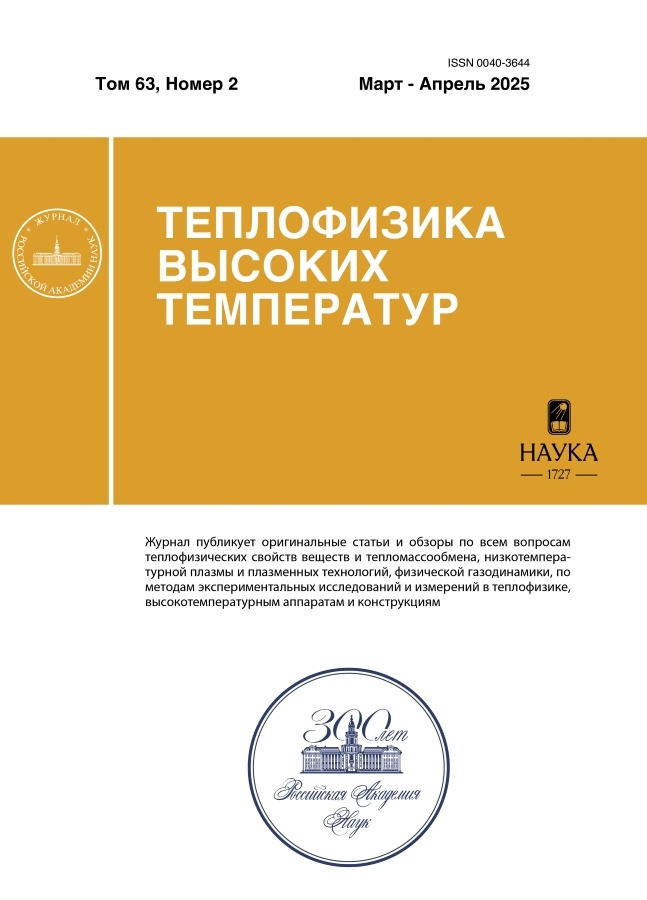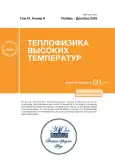Проблема нагнетания сухого пара в пласт без конденсации в скважине
- Авторы: Алишаев М.Г.1, Аливердиев А.А.1,2, Бейбалаев В.Д.1,3
-
Учреждения:
- Институт проблем геотермии и возобновляемой энергетики – филиал Объединенного института высоких температур РАН
- Институт физики ДФИЦ РАН
- Дагестанский государственный университет
- Выпуск: Том 61, № 6 (2023)
- Страницы: 914-919
- Раздел: Тепломассообмен и физическая газодинамика
- URL: https://gynecology.orscience.ru/0040-3644/article/view/653057
- DOI: https://doi.org/10.31857/S0040364423060029
- ID: 653057
Цитировать
Полный текст
Аннотация
Исследуются температурные потери по колонне скважины для случая нагнетания сухого пара с целью выяснения возможности его доставки до забоя без конденсации. Принимается, что в горной породе температура растет с увеличением глубины согласно геотермальному градиенту, расход пара постоянен, пар в устье имеет высокую температуру и является сухим, не содержащим капелек воды. По пути к забою снижается температура пара, но не достигает еще точки насыщения. Потери тепла в горную породу вычисляются по общепринятой формуле. Определяется положение точки начала конденсации пара в скважине. Расчеты проводятся для наиболее вероятных на промыслах расходов 25, 50, 75 и 100 т/сут. Теплоемкость сухого пара считается постоянной, что приемлемо лишь для низких значений давлений, до 3–4 МПа. В этом случае предлагается формула для распределения температуры пара по колонне и задача решается аналитически. Однако при повышенных давлениях приходится учитывать термическую зависимость теплоемкости пара и применять численный метод для нахождения температурного распределения. На основании рассчитанных вариантов делается вывод о возможности подачи количества теплоты фазового перехода в резервуар в полном объеме. Если залежь высокопроницаемая и залегает близко к поверхности, то можно надеяться на доставку теплоты фазового перехода в пласт полностью. При глубинах залегания более 500 м пар полностью конденсируется в колонне. Теплота фазового перехода поступает в горную породу.
Об авторах
М. Г. Алишаев
Институт проблем геотермии и возобновляемой энергетики – филиал Объединенного института высоких температур РАН
Email: alishaev@rambler.ru
Россия, Махачкала
А. А. Аливердиев
Институт проблем геотермии и возобновляемой энергетики – филиал Объединенного института высоких температур РАН; Институт физики ДФИЦ РАН
Email: alishaev@rambler.ru
Россия, Махачкала; Россия, Махачкала
В. Д. Бейбалаев
Институт проблем геотермии и возобновляемой энергетики – филиал Объединенного института высоких температур РАН; Дагестанский государственный университет
Автор, ответственный за переписку.
Email: alishaev@rambler.ru
Россия, Махачкала; Россия, Махачкала
Список литературы
- Максутов Р.А., Орлов Г.А., Осипов А.В. Освоение запасов высоковязких нефтей в России. ОАО “РИТЭК” Нефтеотдача // Технологии ТЭК. 2005. № 6. С. 36.
- Вахитов Г.Г. Нефтяная промышленность России: вчера, сегодня, завтра. М.: ОАО “ВНИИОЭНГ”, 2012. 400 с.
- Байбаков Н.К., Гарушев А.Р. Тепловые методы разработки нефтяных месторождений. М.: Недра, 1988. 343 с.
- Kokal S., Al-Kaabi A. Enhanced Oil Recovery: Challenges & Opportunities // World Petroleum Council: Official Publication. 2010. V. 64(1). P. 64.
- Mokheimer E.M.A., Hamdy M., Abubakar Z., Shakeel M.R., Habib M.A., Mahmoud M. A Comprehensive Review of Thermal Enhanced Oil Recovery: Techniques Evaluation // J. Energy Resour. Technol. 2019. V. 141. № 3. 030801.
- Алишаев М.Г. Уточнение потерь тепла для геотермальной скважины // Изв. РАН. Энергетика. 2010. № 1. С. 36.
- Александров А.А., Григорьев Б.А. Таблицы теплофизических свойств воды водяного пара: Спр. М.: МЭИ, 1999. 168 с.
- Alishaev M.G., Beybalaev V.D., Aliev R.M., Aliverdiev A.A. Heating and Cooling of Water Injected Into the Well // Thermal Science. 2021. V. 25. Spec. № 2. P. S315.
- https://toolbox.tlv.com/global/TI/calculator/
- http://twt.mpei.ru/MCS/
- Александров А.А., Орлов К.А., Очков В.Ф. Теплофизические свойства рабочих веществ теплоэнергетики. Спр. М.: Изд. дом МЭИ, 2019. 224 с.
- Бадертдинова Е.Р., Хайруллин М.Х., Шамсиев М.Н. Термогидродинамические исследования вертикальных нефтяных скважин // ТВТ. 2011. Т. 49. № 5. С. 795.
- Магид М.Ш., Авчян Г.М., Дортман Н.Б. и др. Физические свойства горных пород и полезных ископаемых (петрофизика): Спр. геофизика / Под ред. Н.Б. Дортман. М.: Недра, 1976. 527 с.
- Emirov S.N., Aliverdiev A.A., Zarichnyak Y.P., Emirov R.M. Studies of the Effective Thermal Conductivity of Sandstone under High Pressure and Temperature // Rock Mech. Rock Eng. 2021. V. 54. P. 3165.
- Хайруллин М.Х., Гадильшина В.Р., Шамсиев М.Н., Морозов П.Е., Абдуллин А.И., Бадертдинова Е.Р. Термогидродинамические исследования вертикальных скважин с трещиной гидравлического разрыва пласта // ТВТ. 2017. Т. 55. № 1. С. 129.











